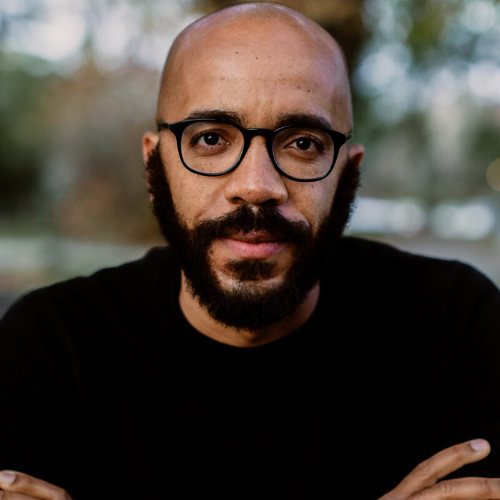New York Times Best Selling author, Clint Smith comes to campus to discuss education’s role in developing a more robust understanding of slavery and white supremecy. PHOTO CREDIT: uri.edu
Across America, there are countless reminders of the history of slavery, such as monuments and statues erected celebrating Confederate soldiers and slave-owning politicians, yet some may not realize how hurtful these monuments may be.
Clint Smith, a New York Times Best Selling author, public speaker, educator, journalist at the Atlantic and host of the Youtube series “Crash Course Black American History,” sat down to discuss the disparities in the education due to the legacy of slavery in an event hosted by the University of Rhode Island on Wednesday.
The event entitled “A Conversation With Clint Smith: How the Word is Passed” was moderated by the new Director of the Harrington School of Communication and Media Ammina Kothari.
Smith studied at Davidson College, where he earned his B.A. in English. Following this, he earned a Ph.D. in education from Harvard University.
Currently, Smith is teaching writing and literature to inmates at the Washington D.C. Central Detention Facility, after years of teaching in Prince George’s County in Maryland, according to Kothari’s introduction.
His most recent book “How the Word is Passed: A Reckoning with the History of Slavery Across America” was published in June, and was named a New York Times Best Seller. The book is a narrative nonfiction history of slavery in the United States, focusing on how the effects of slavery are taught and learned across the country.
“So much of this book emerges from a desire to fill in gaps of my own childhood, education and understanding,” Smith said.
He began the talk by explaining the travels that he went on during his writing process. His journey across America took him to Louisiana, Virginia and New York City, all of which Smith described as places of extreme importance to the history of slavery.
“I thought, ‘How do different places reckon with, or fail to reckon with, their respective relationships to the history of American slavery?’” Smith said. “So I started traveling to dozens of places, nine of which ended up in the book.”
The first stop on Smith’s journey was Monticello Plantation in Charlottesville, Virginia. Monticello was the primary plantation owned by Thomas Jefferson. Smith noted the “cognitive dissonance and hypocrisy” personified by Monticello and Jefferson since he was the man who wrote the famous line “all men are created equal” while simultaneously owning hundreds of slaves.
Next, Smith spoke about his trip to Angola State Prison in Louisiana. Angola is the largest high-security prison in the United States, housing almost 6,500 inmates, 76 percent of whom are people of color. The penitentiary is named after the slave owner who lived on a massive plantation on the same land as the prison, which has a similar racial demographic according to him.
“The afterlife of slavery continues to shape the landscape and infrastructure of this prison,” said Smith. “You have these folks working on this plantation for no pay, pennies on the hour and someone watches over them on horseback with a gun upon their shoulder.”
He then talked about what he said was one of the most crucial and interesting stops on his journey: a Confederate cemetery in Virginia.
Smith said that he had a conversation with a descendant of a Confederate soldier and described the conversation as incredibly poignant. Jeff, as he was introduced by Smith, explained that history is an heirloom for many. The conversations with Jeff and other descendants of Confederate soldiers showed Smith how they viewed the Civil War and the Confederacy.
“There is a profound difference in the way people understand the history of this country,” Smith said.
The last stop on Smith’s journey was in New York City. Smith said that what he found here was both surprising and shocking, due to New York being a northern state.
New York City was home to the largest slave market in the United States and had a huge role in the institution of slavery. One homage to the legacy of slavery in the United States can actually be seen in the Statue of Liberty, which has broken shackles around her ankles. These chains are hidden from the public though, which Smith said represents the nation’s unwillingness to accept its troubled past.
After his talk, Smith answered pre-recorded questions from Harrington School students.
Smith responded to a student who asked which medium is most effective to share his stories.
He described himself as “governed” by his curiosity and said he admires those writers and thinkers who have written poems, plays and novels most, “who rejected departmentalization of a genre.”
Besides exploring the history and legacy of slavery, Smith focused on the human impact on everyday citizens.
“There has been a shift in public consciousness,” Smith said. “I think we are collectively developing a more robust understanding of [how the] history of racism and white supremacy have shaped America.”





